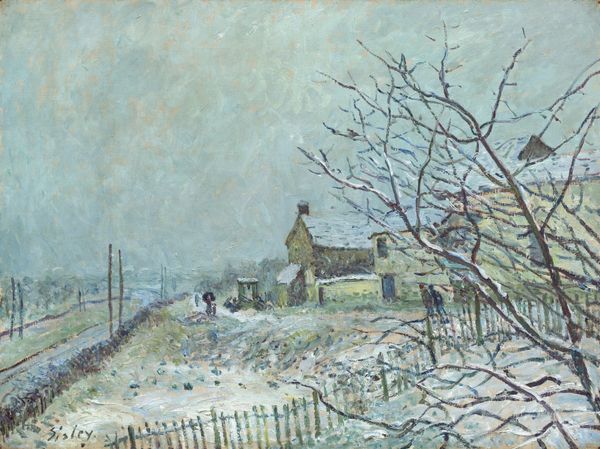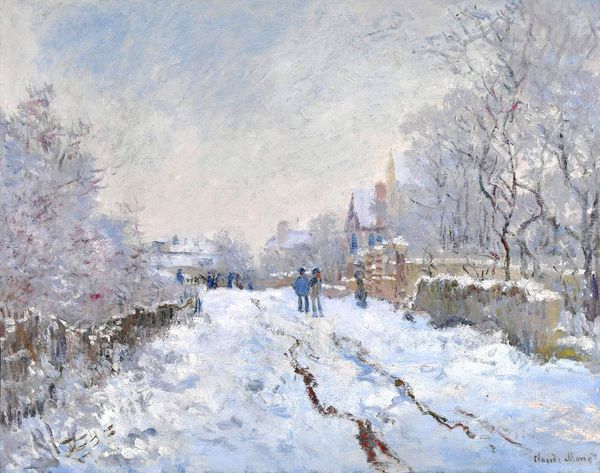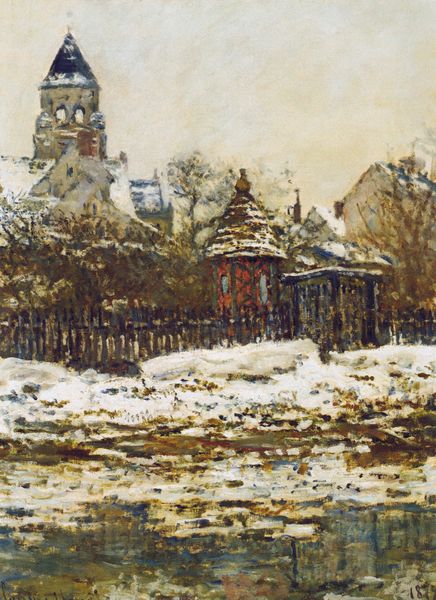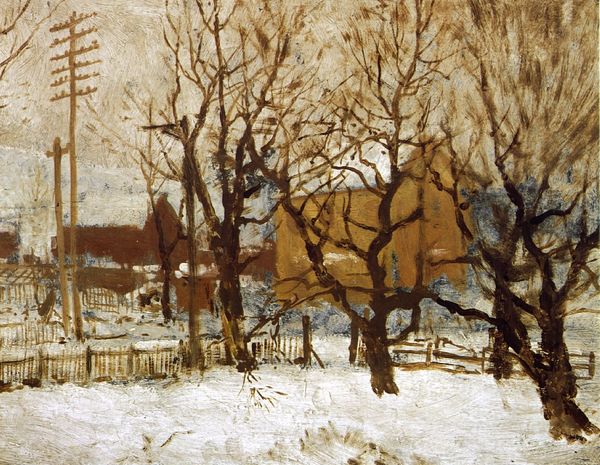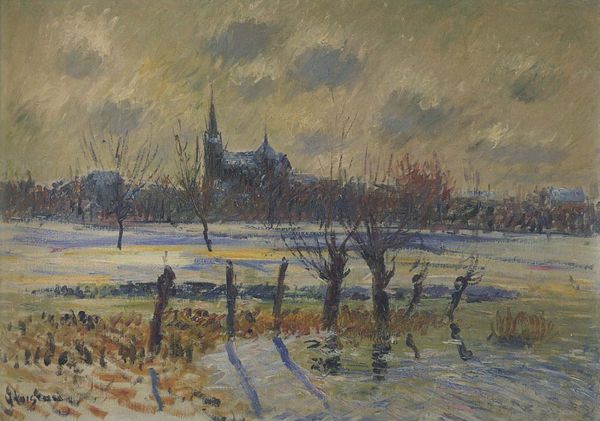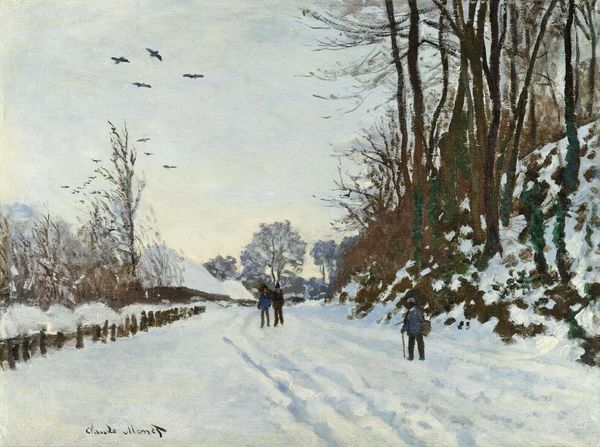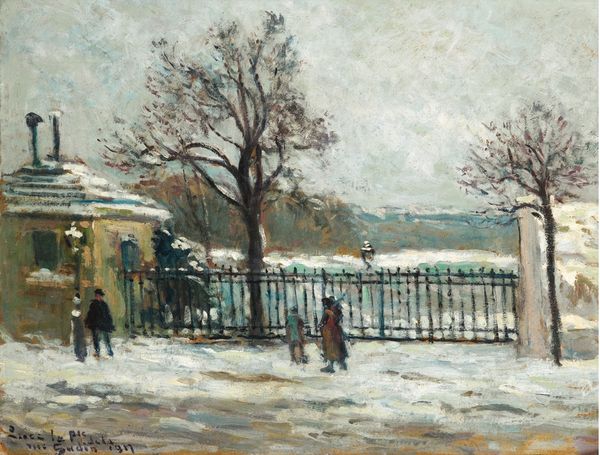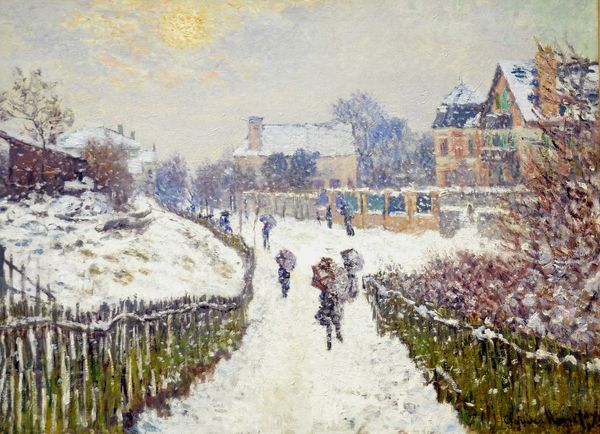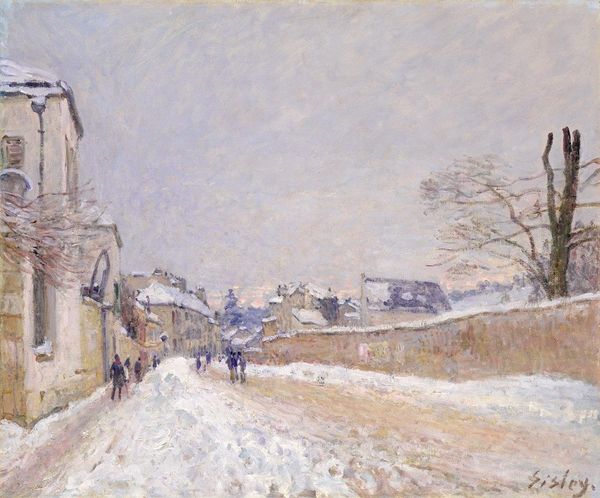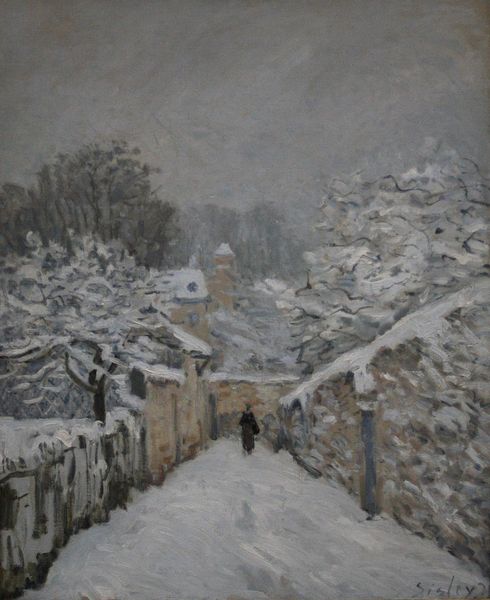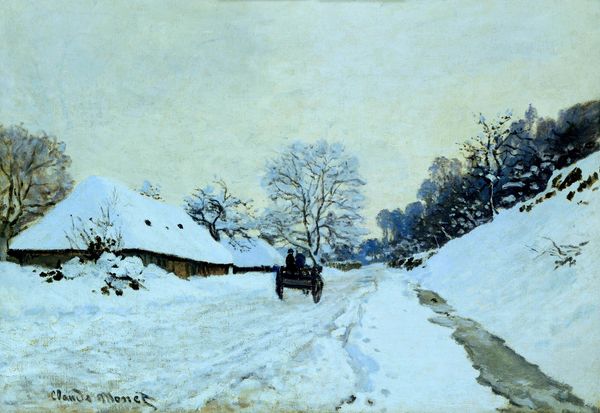
plein-air, oil-paint
#
tree
#
snow
#
impressionism
#
plein-air
#
oil-paint
#
landscape
#
winter
#
house
#
impressionist landscape
#
figuration
#
possibly oil pastel
#
oil painting
#
cityscape
#
monochrome
Dimensions: 54 x 73 cm
Copyright: Public domain
Curator: Alfred Sisley’s “Snowy Weather at Veneux Nadon,” painted in 1880 using oil on canvas, captures a winter landscape. Editor: My first impression is how somber yet serene it feels. The cool greys and muted palette give it an almost monochrome quality. You can almost feel the bite of the winter air. Curator: Indeed. Sisley’s deliberate use of a limited tonal range reinforces the painting’s subdued mood. Note how the structure of the composition directs the viewer's eye from the foreground figure towards the distant houses and pale horizon. Editor: The materiality of the snow is fascinating. Sisley captures it not just as a color but through varying impasto techniques to represent its texture and reflective properties. I wonder about the labor involved in painting en plein air during winter. Curator: It emphasizes the artist's engagement with modern life through Impressionism. Sisley translated the immediacy of his perceptions into an array of broken brushstrokes. His interest, you see, wasn’t simply the replication of form but to seize the optical experience of a moment in time. Editor: Yes, but it also strikes me as a portrayal of working life, of humans existing within specific climate constraints. How did the people of Veneux Nadon interact with the elements to survive? I keep considering the socioeconomic reality for the individual in the foreground struggling up the snowy path. Curator: A valuable viewpoint, of course, though the figures serve equally as formal devices that assist in delineating depth within the canvas's pictorial space. It's a brilliant orchestration of form and color that transcends simple narrative representation. Editor: Agreed. Beyond the sheer optics and visual impact, what’s represented reveals that Impressionism as an outdoor painting movement relies so heavily on seasonal workers being outside in sometimes difficult situations. Curator: Such a comprehensive understanding certainly adds another layer of interpretation, moving us away from purely formalistic appreciation to engage in a dialogue that considers its sociohistorical fabric. Editor: Indeed, together these elements—form and context—reveal not just the art but the world that shaped it.
Comments
No comments
Be the first to comment and join the conversation on the ultimate creative platform.
